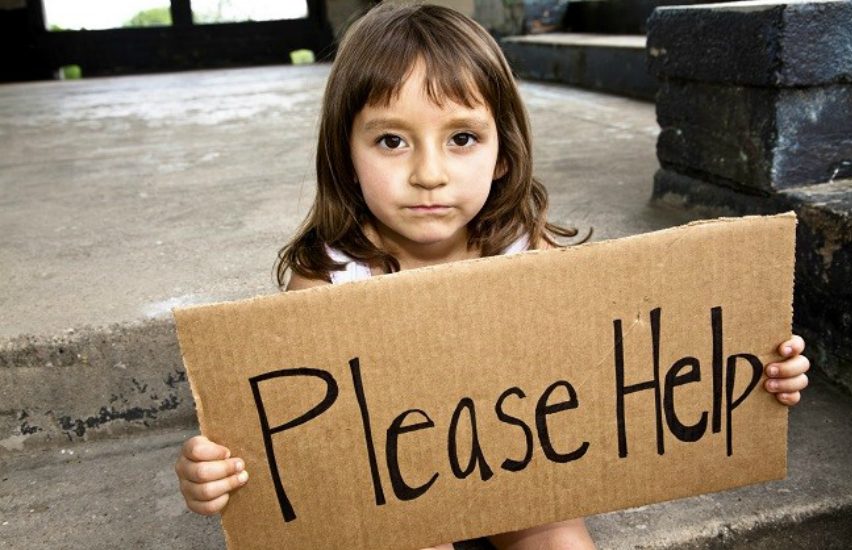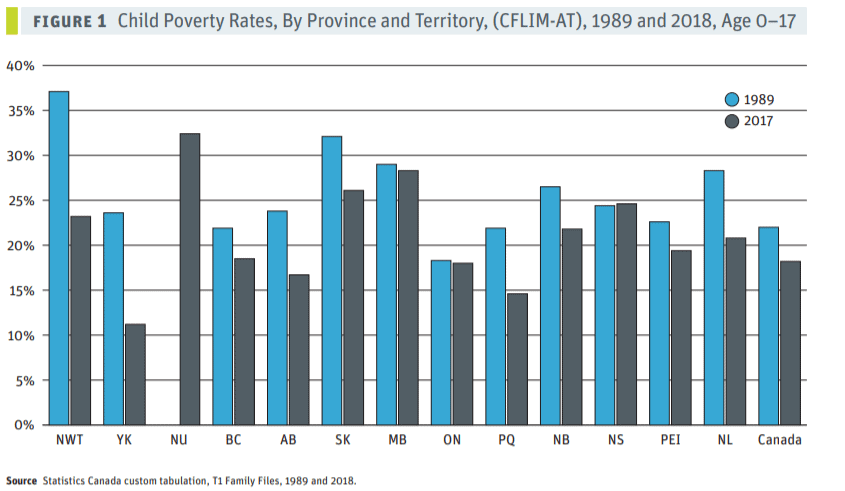
KJIPUKTUK (Halifax) – Provincial governments claim to care about children living in poverty, but it’s mostly words and empty gestures.
We have been reporting on the release of the Report Card on Child and Family Poverty in Nova Scotia for many years now. And year after year the news is grim.
This year’s report, as always published by the Nova Scotia chapter of the Canadian Centre for Policy Alternatives (CCPA), is no exception. The report was launched virtually this morning via Zoom.
41,370 children, one in four, live in poverty in Nova Scotia. For children under six that number is actually almost one in three!
It’s hard to fathom how politicians can shrug off these horrendous numbers, especially given that we know that solutions exist, and all it takes is political will.
Nova Scotia continues to have the highest rate of child poverty in Atlantic Canada, a rate that actually increased by close to 2 percent relative to the previous year. In Canada only Saskatchewan and Manitoba have slightly higher rates.
The report uses income tax and Statistics Canada data for 2018, the most recent data available.
The authors, Lesley Frank, Laura Fisher and Christine Saulnier, are recommending that Nova Scotia articulate a comprehensive and robust poverty eradication plan. Part of that should be the creation of a child and youth advocate office. Income assistance rates must increase, by a lot. Permanent rent control and a moratorium on all evictions is another must have, the authors say.

The 2019 Report Card on Child and Family Poverty in Nova Scotia reveals that the percentage of children living in low-income circumstances in Nova Scotia has decreased a measly 0.82% since the 1989 promise to end child poverty. As the graph above shows, other provinces performed much better over that period.
Nova Scotia has the lowest welfare incomes in Canada for single parent families with one child (only 57% of the Market Basket Measure poverty line), and the second lowest, for couple families with two children (61% of the MBM) (2019).
In 2019, the maximum welfare income for a single parent with one child in Nova Scotia was $18,372 which is $900 less per year than in 1989 when adjusted for inflation.
Some families with children face higher risks of poverty and greater depths of poverty compared to others. The lowest rates of child poverty are in Antigonish (20.2%) and Halifax (20.4%). The child poverty rates are highest in Cape Breton (34.9%), Annapolis (34%), and Digby (33.1%), where more than 1 in 3 children lived below the LIM-AT.
It’s when you zoom in further that numbers become more stark and the role of race becomes apparent.
Forty-one postal areas have child poverty rates at 30% and higher. The range of rates is quite significant from a low of 6.3% in Fall River, part of the Halifax Regional Municipality, to a high of 78.1% in the rural postal code of Micmac, which includes part of the Sipekne’katik First Nations, the CCPA reports. North Preston (postal city) was 55.6% in 2018 (an increase from 52.9% in 2017). The FSA postal codes B1N (Whitney Pier) has a child poverty rate of 41.9%, Rural Route B0V1A0 (Digby) a rate of 44%, and 36.7% in the FSA postal codes B3K (Halifax North End).
2016 Census data shows that over one-third (37.4%) of visible minority children were low-income. 67.8% of Arab children, 50.6% of Korean children, and 39.6% of Black children were low-income compared to 20.3% of non-visible minority children. Census data also shows higher rates of low-income among new immigrant children (56.8.%) and higher rates for off-reserve children of Aboriginal status (25.6%).
Inadequate income assistance rates remain one of the leading causes of child poverty in Nova Scotia.
“In 2019, Nova Scotia had the lowest welfare incomes in Canada for single parent families with one child reaching only 57% of the market basket measure poverty line, and the second lowest for a couple families with two children at 61% of the market basket measure,” said Laura Fisher, one of the co-authors of the report.
“The maximum welfare income from all sources combined for a single parent with one child was only a little over $18,000 a year. And when adjusted for inflation, this is less per year than over 30 years ago. This means that families on income assistance are living in deep poverty,” Fisher said.
“This is not just about numbers, I can see the faces and hear the voices of parents as they describe turning to sex work to survive out of desperation. I can feel the effort and frankly, the work that it takes to be poor, especially in our under resourced province. The juggling act of trying to make ends meet and deciding which basic need is more of a priority heating or food. I remember the desperation in people’s voices and the way lower income families are more likely to be entangled with multiple systems that often keep them living in poverty rather than help them out of it,” said Fisher.
See also: Laura Fisher: Are poor moms and babies welcome in Nova Scotia?
Is there anything in the report that doesn’t make you want to shake someone?
It was either last year or the year before that that the Minister of Community Services suggested that there must have been an error in the annual report to explain the statistics, and the department was checking the numbers.
That was the last we heard of that.
At what point do we begin to ask whether child and family poverty is not simply a matter of government neglect but in fact is a means of maintaining social stratification, the report asks.
In other words, when do we begin to think all this is on purpose?
What a thing to have to contemplate.
See also: The face of poverty: Skipping food and going without oil to save every penny for his children
With a special thanks to our generous donors who make publication of the Nova Scotia Advocate possible.
Subscribe to the Nova Scotia Advocate weekly digest and never miss an article again. It’s free!




How best to help?
But how can we help? Forget the government. The people are strong. What can we do. Where should we donate?